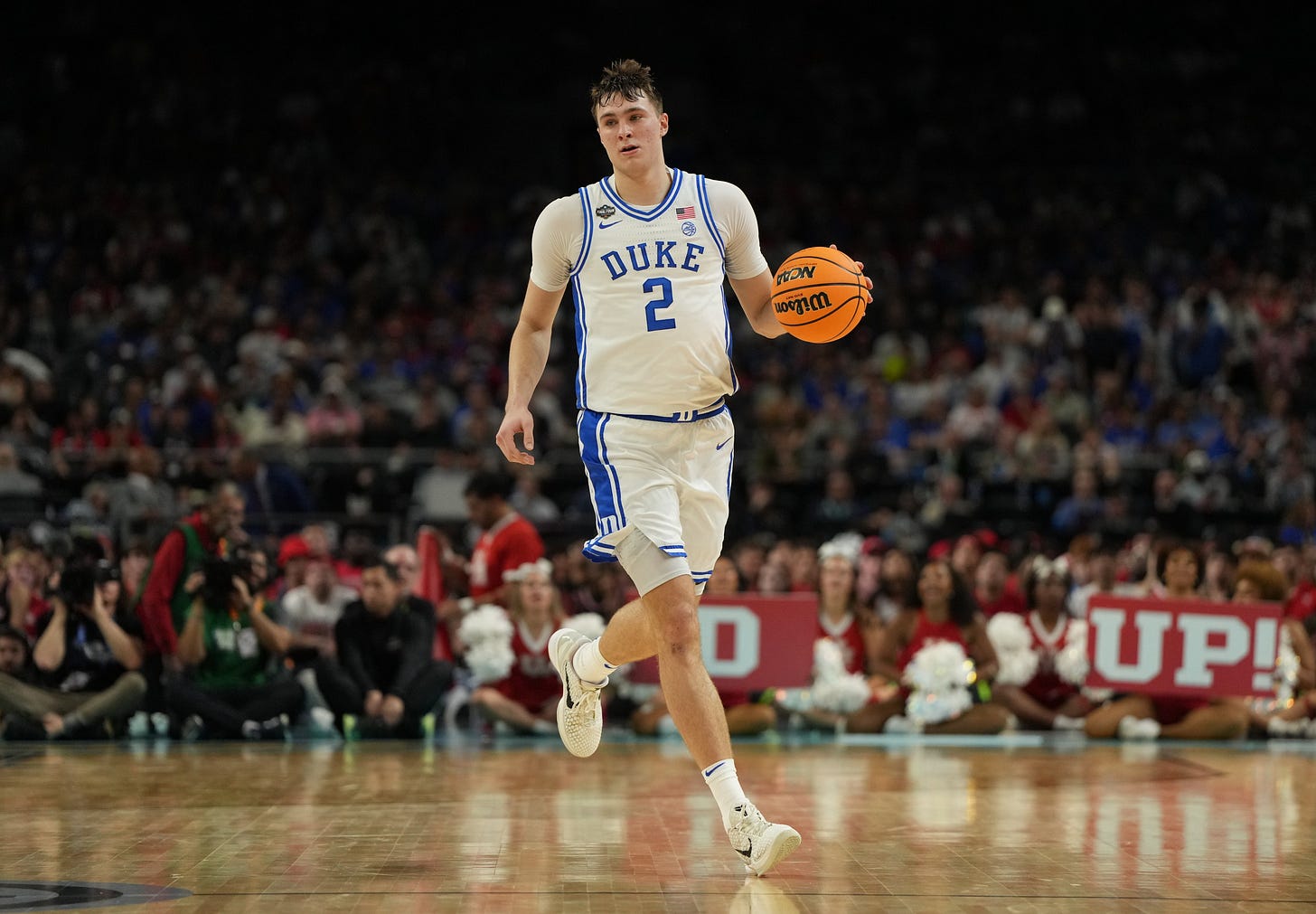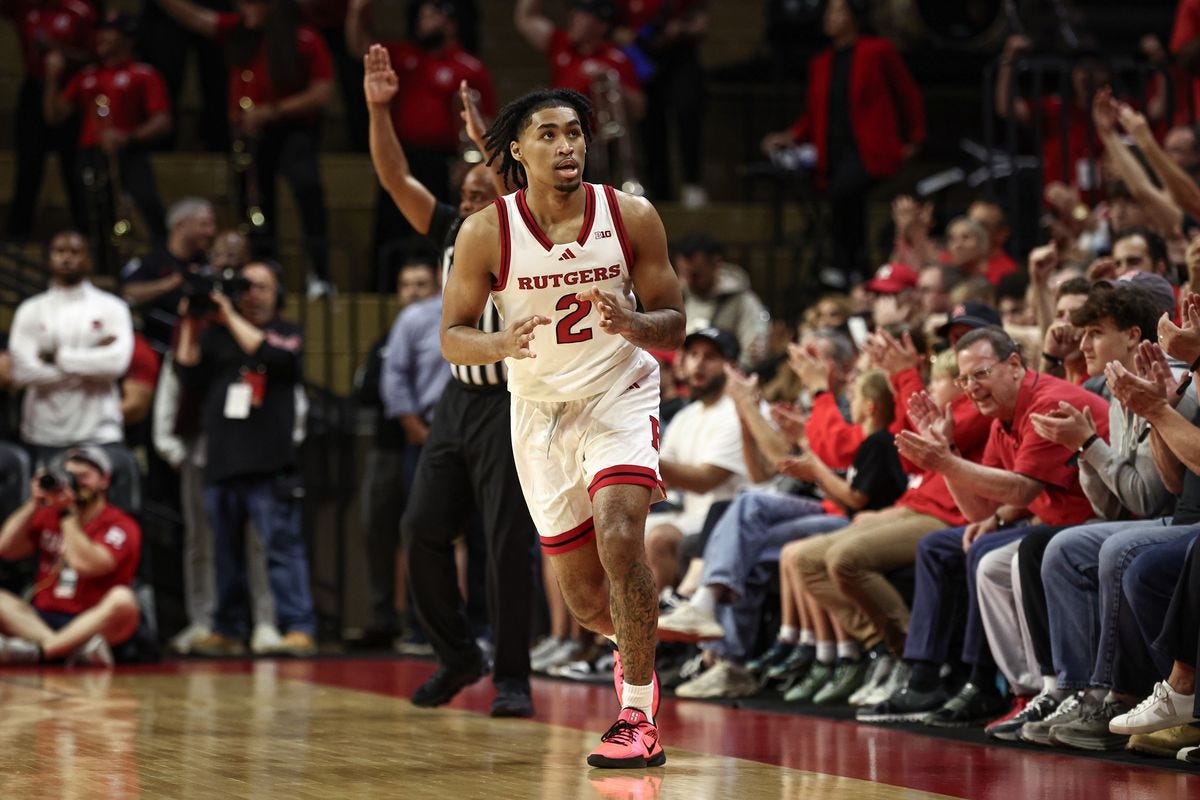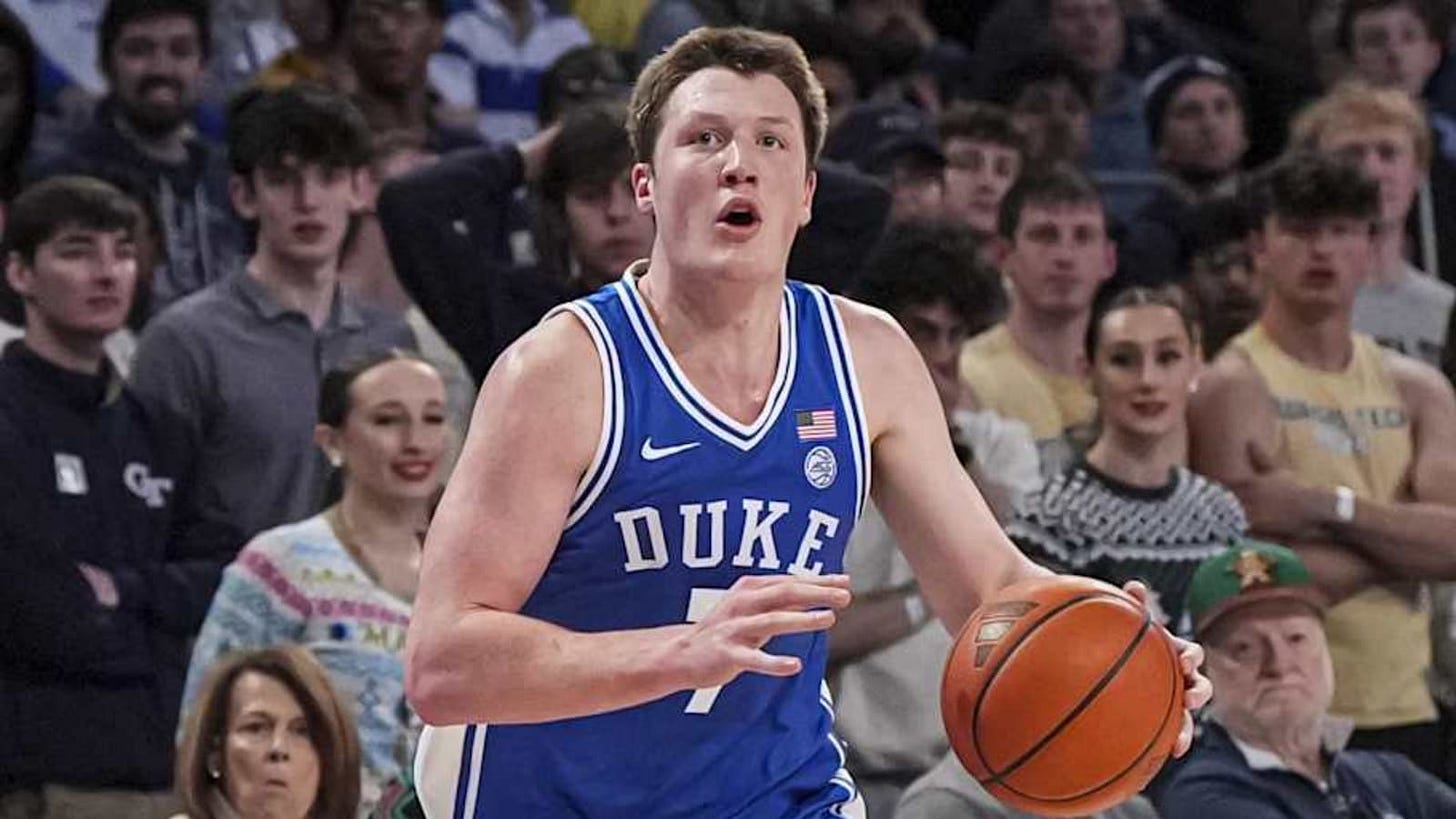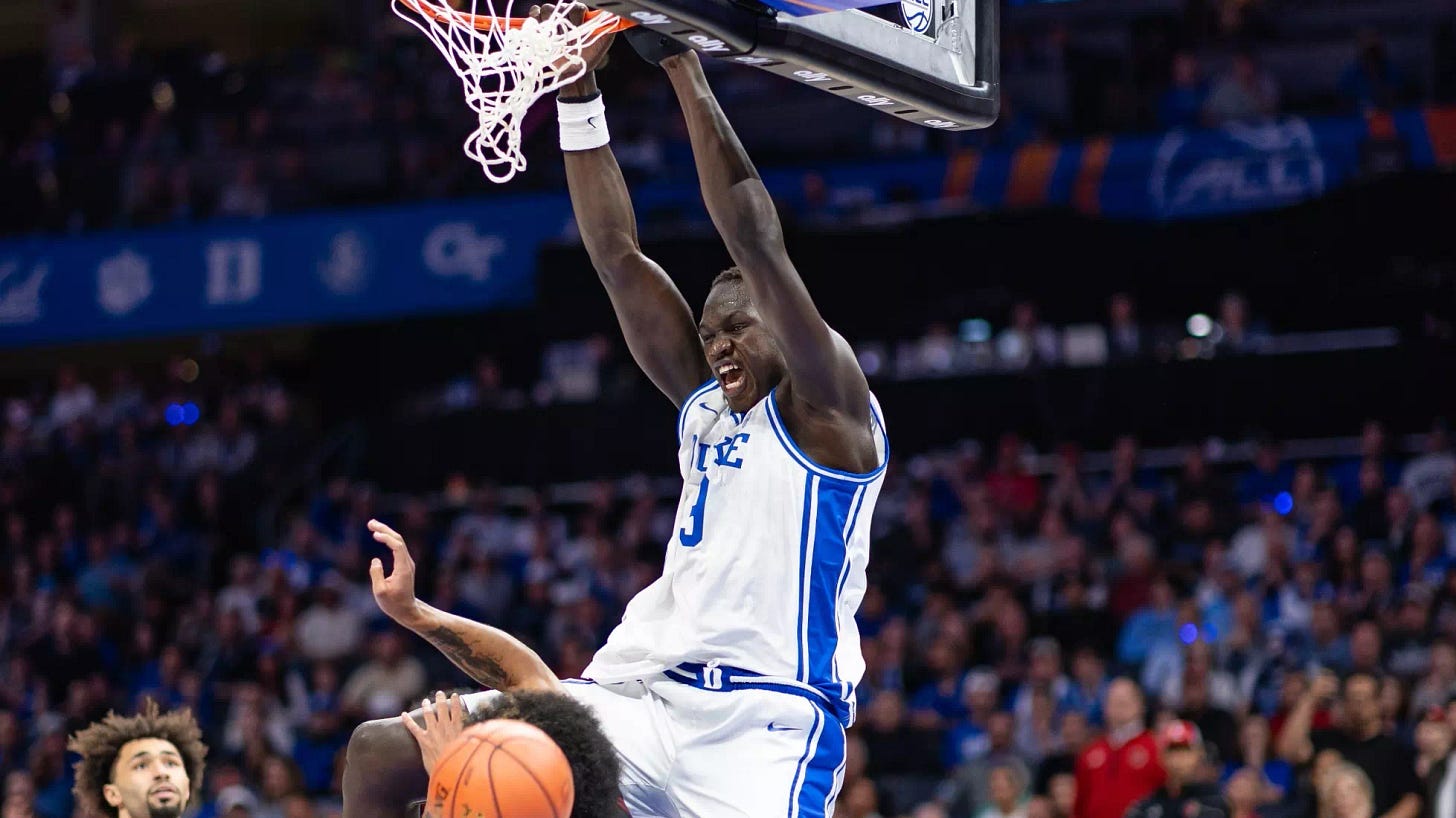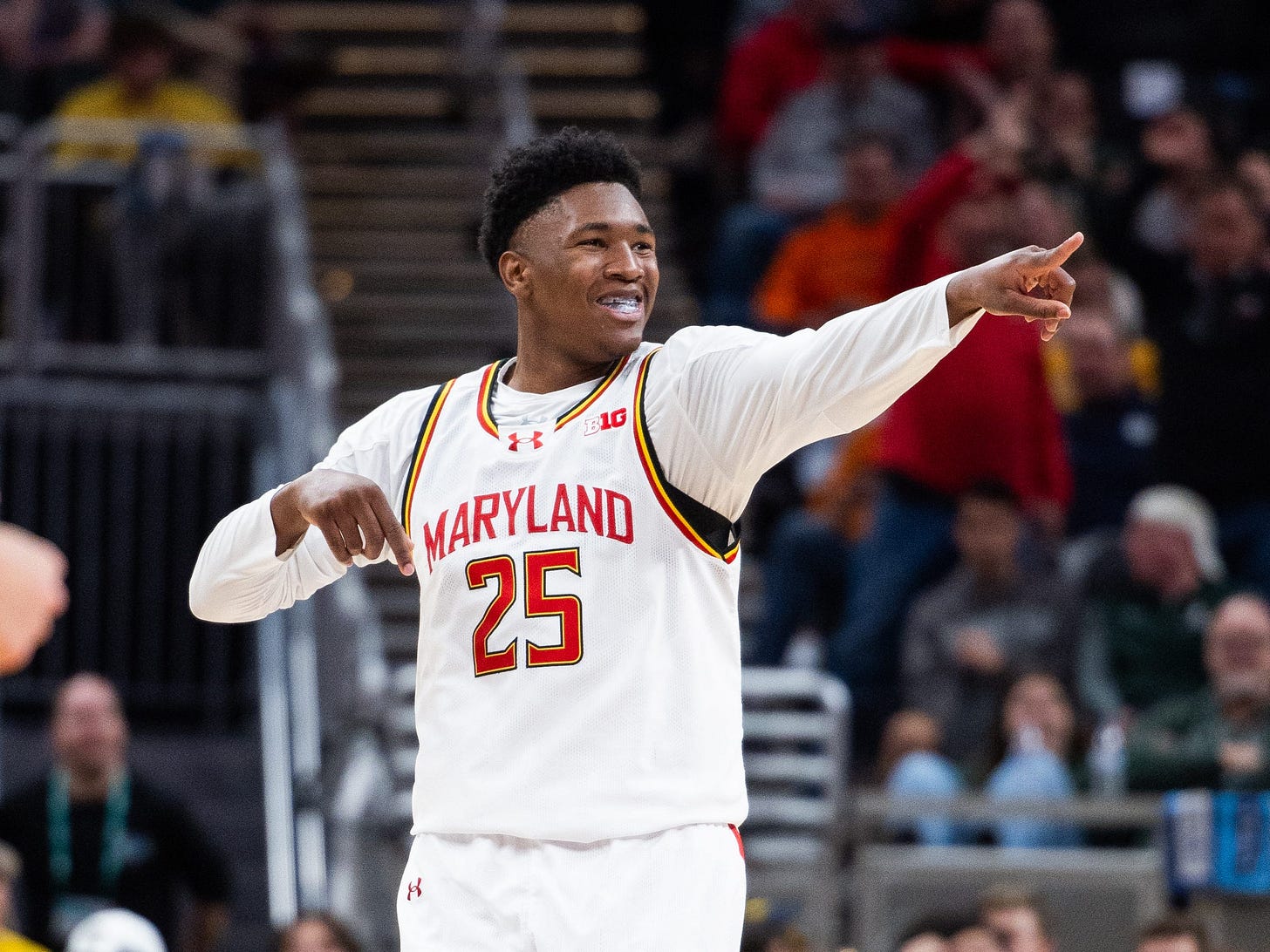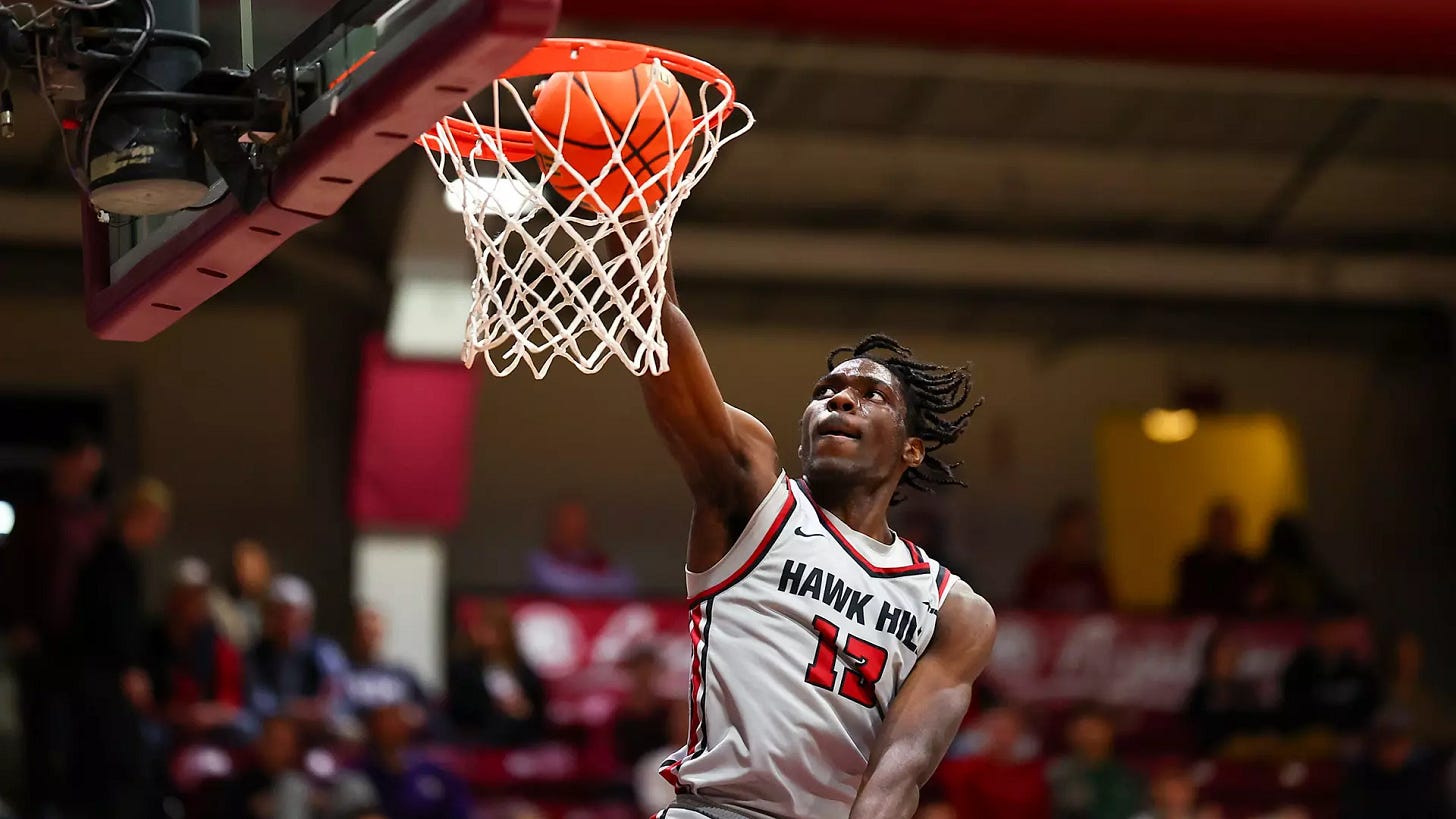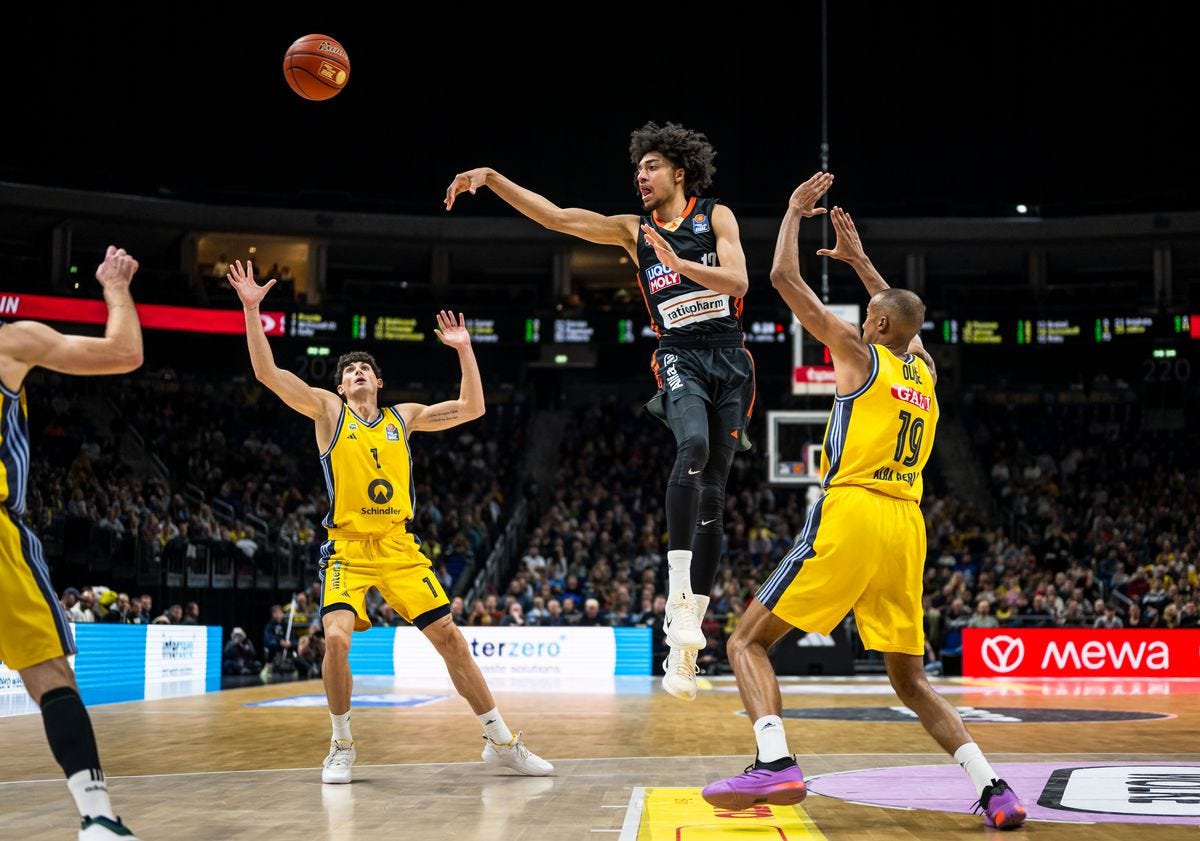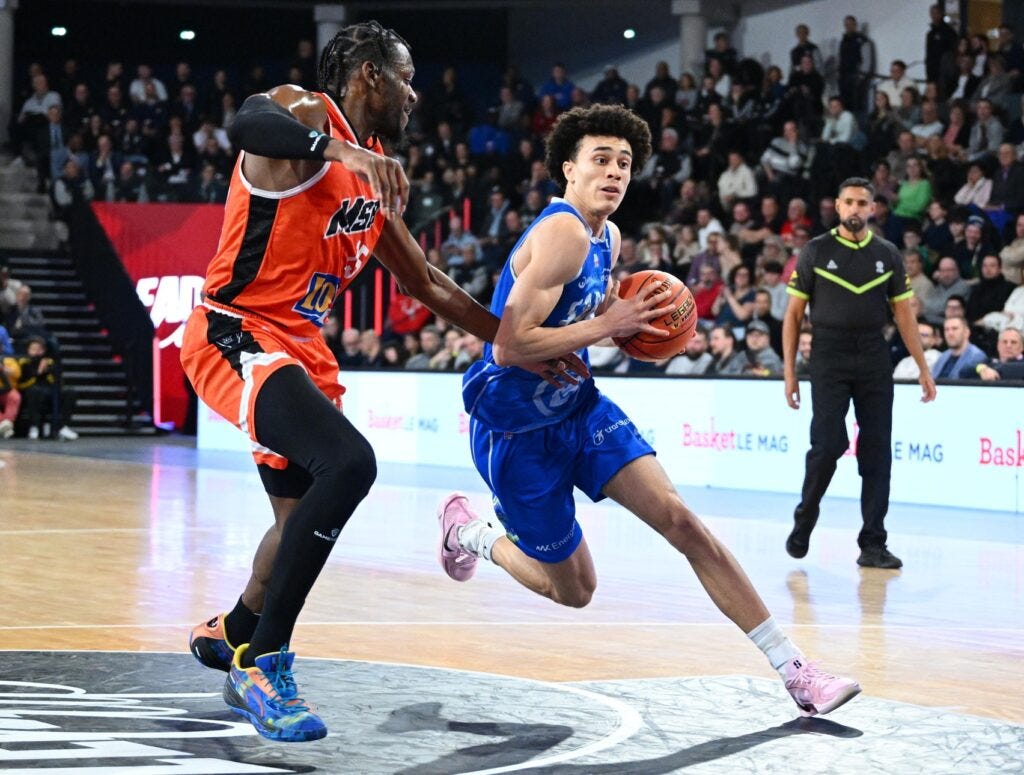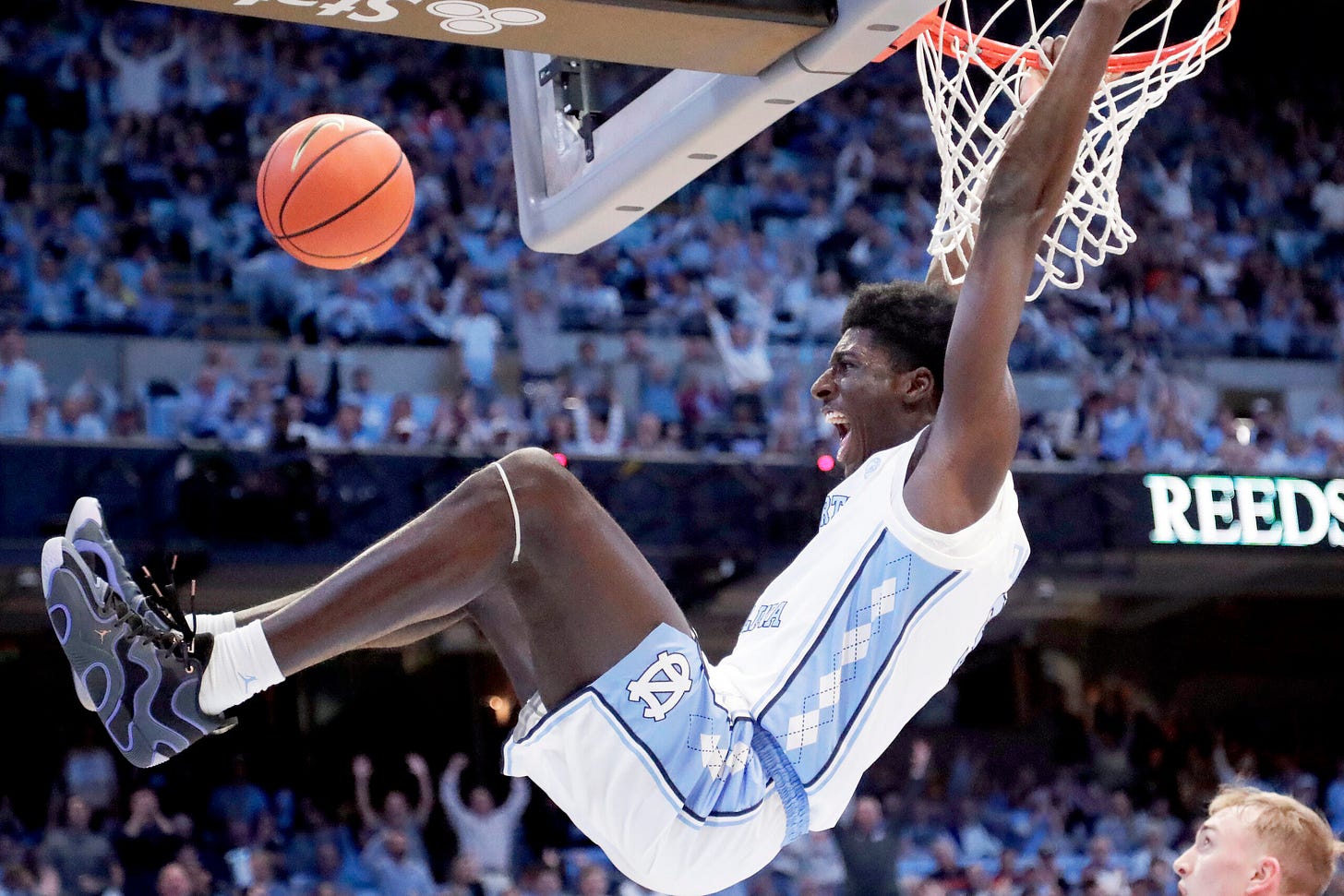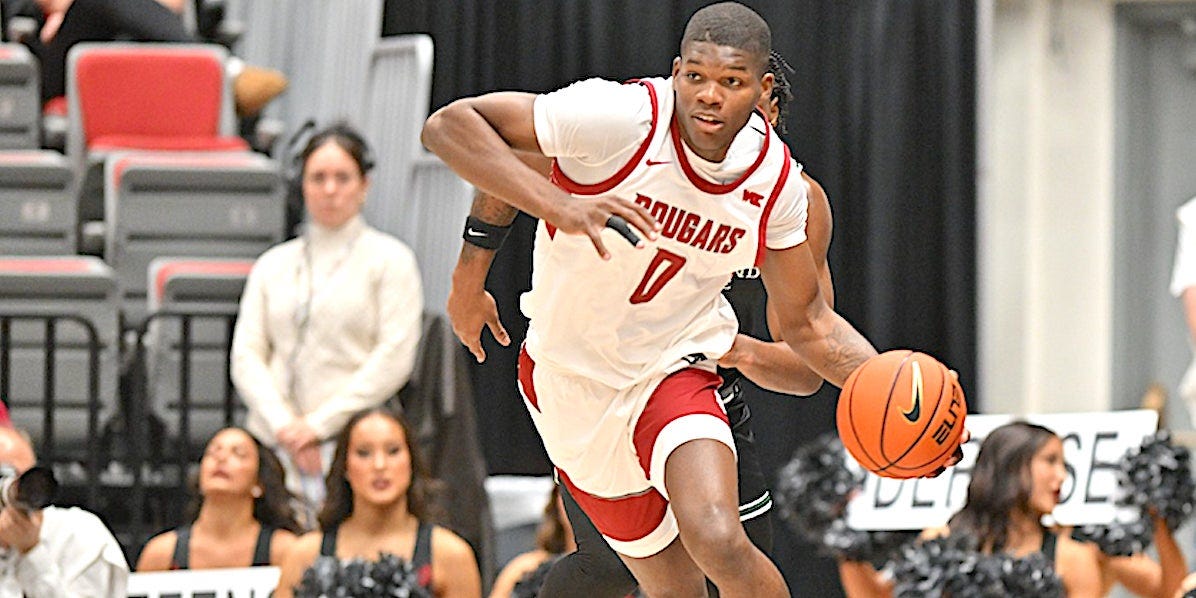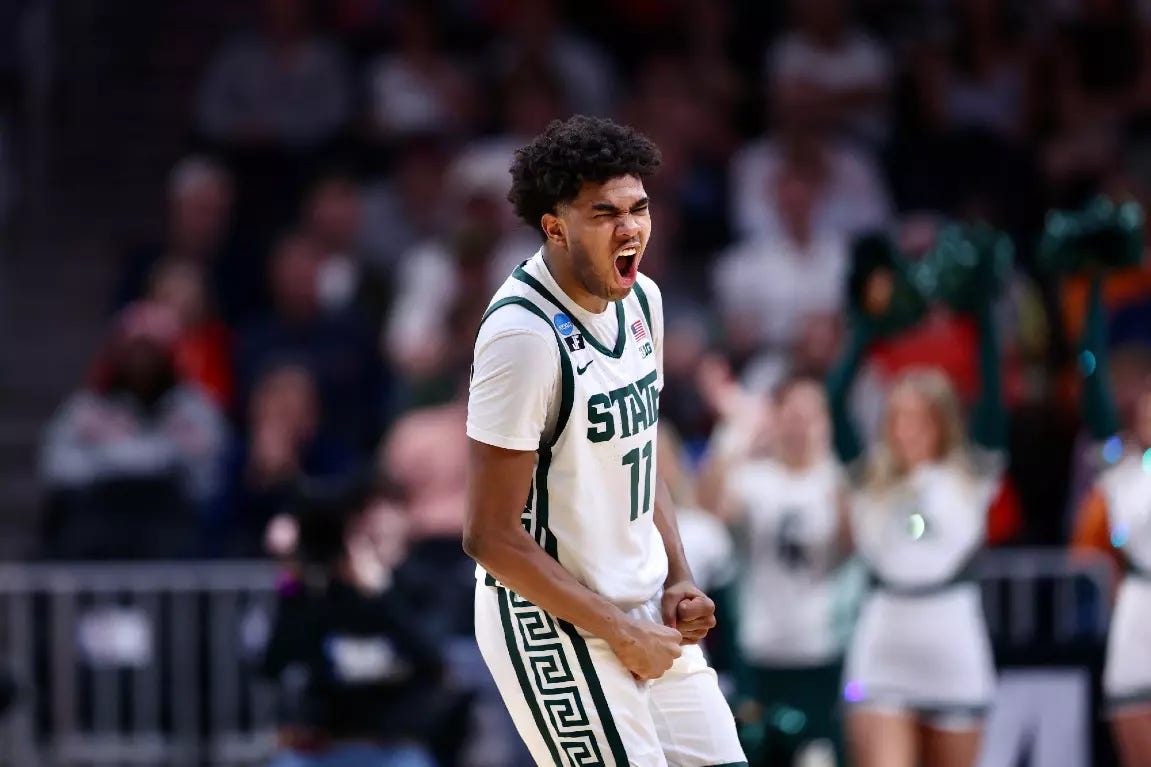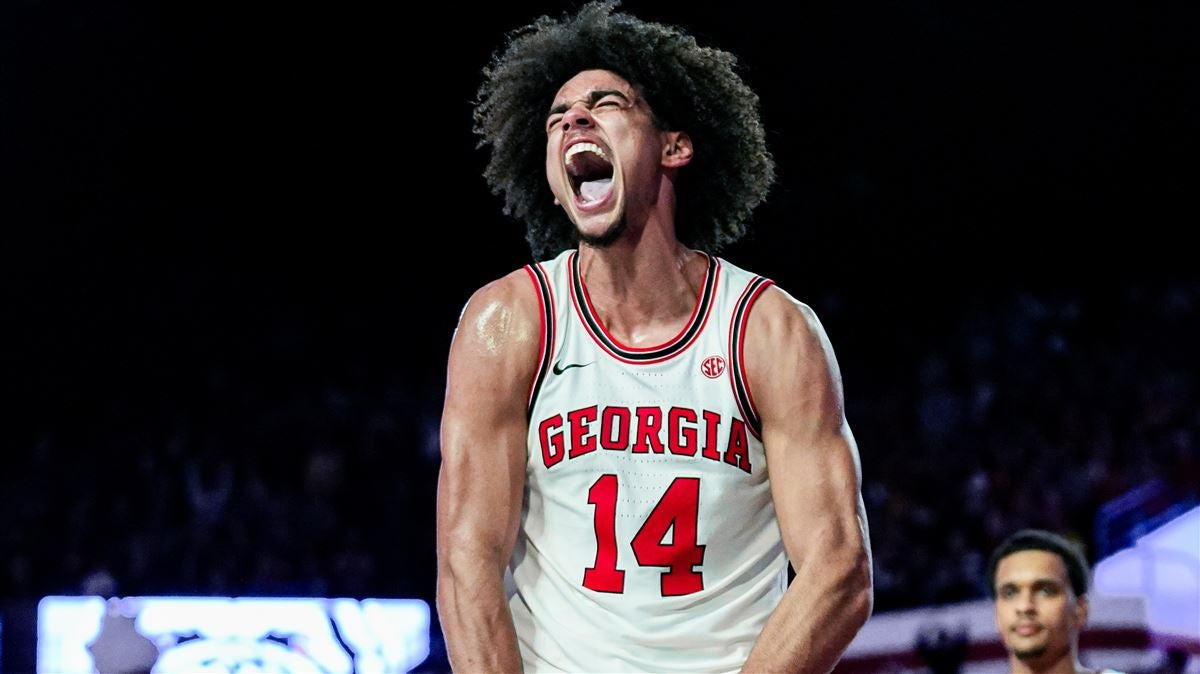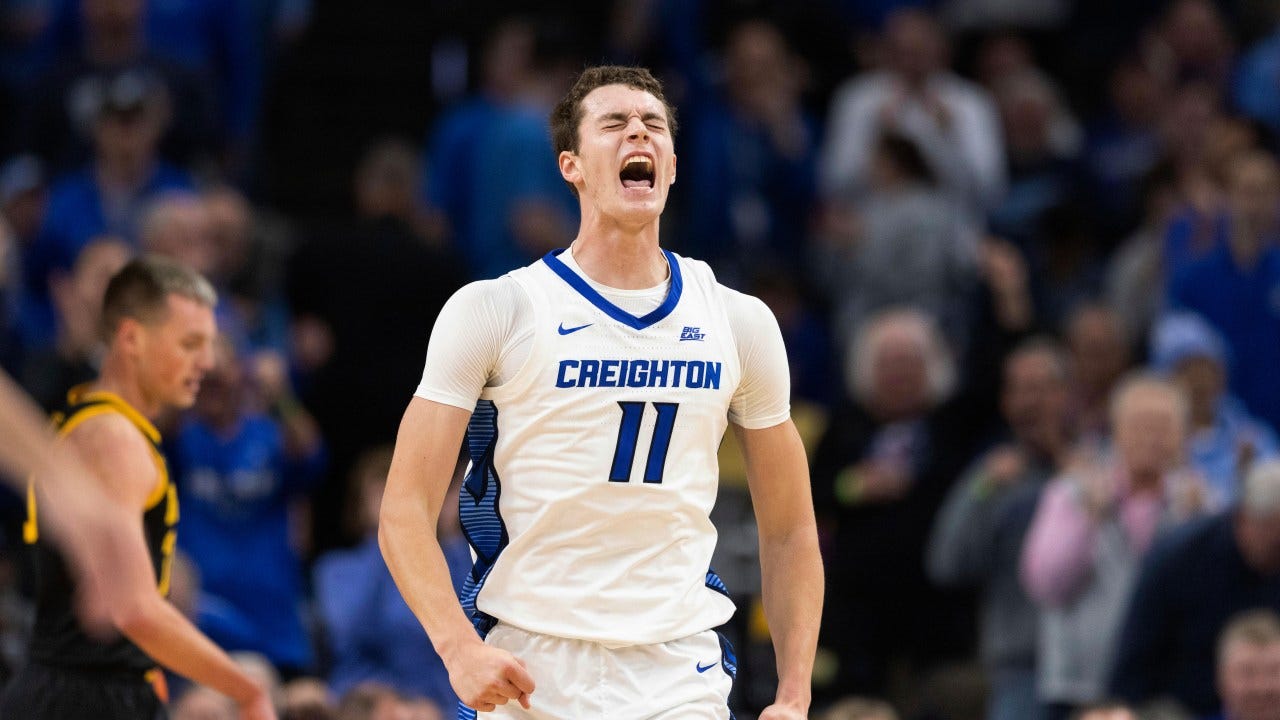2025 Mock Draft
Josh does a final run through of what he thinks should happen on Draft Day, factoring in both his own evaluation and team needs and timelines.
Disclaimer: This mock draft is based on a combination of my own personal evaluation of players and team needs and timelines. Incorporating these two ideals, I made picks that I would make if I were in the position of the GM.
To spice things up, I have included a couple trades that felt realistic and satisfied the needs of teams involved.
Give it a read and let me know what you think!
1. Dallas Mavericks - Cooper Flagg, F, Duke
Duh.
The only question about Cooper Flagg was about who was drafting him first overall. That question was answered at the lottery, when the miracle Mavericks moved up ten spots to get the rights to draft the borderline generational prospect.
Flagg is a king-of-all-trades player, who is arguably the most well-rounded prospect in the last decade. His ability to dominate the game defensively is only enhanced by his ability to score at all levels and make great playmaking reads.
He’s everything you want in a franchise cornerstone, and he’s walking into, arguably, the best situation you could ask for. From an NFL perspective, imagine a quarterback being drafted into a franchise with an offensive line and playmaking weapons already in place. Flagg is joining two All-NBA caliber players in Kyrie and AD, who should ease the transition for an already NBA-ready prospect.
2. San Antonio Spurs - Dylan Harper, PG, Rutgers
The rich get richer, with San Antonio leapfrogging their way towards the top of the draft for the third year in a row.
And after landing an alien in Victor Wembanyama in 2023, they find a perfect counterpart to him this year in Dylan Harper.
Harper is a demon going downhill and was a prolific paint finisher at the collegiate level, despite entire defensive gameplans being crafted towards stopping that. At the NBA level, where spacing is worlds better, these traits hint at his ridiculous upside.
The Spurs offense will be a tall task to guard with Harper in the mix. How can you help off of Wemby from the dunker’s spot when Harper is slicing through your defense? There are so many iterations of that question, which is a testament to how great of a duo the two can grow into.
3. Philadelphia 76ers - Ace Bailey, W, Rutgers
Ace Bailey is one of, if not the, most polarizing prospects in this draft. And the polarizing outlook with which we view him mirrors his play. He’s had stretches of genius, pouring in 30+ points on a little over ten dribbles, but he’s also struggled, showing poor shot selection and a general lack of feel.
How you evaluate him depends on whether or not you think his juice is worth the squeeze.
Personally, I rather strike out swinging. Ace Bailey has the upside to make you regret passing on him. He has a habit of making difficult shots look casual, to the detriment of both his efficiency and an offense’s flow.
But I buy that the shot selection and feel will take a step forward at the next level. He’s had moments of brilliance as a playmaker, capable of making difficult passes and setting up his teammates for easy looks.
Under the tutelage of Paul George, he can refine his to its highest capacity, especially in a Sixers system that has maximized prospects in recent years.
4. Charlotte Hornets - VJ Edgecombe, G, Baylor
There’s a shortlist of players in this class with the explosiveness and athleticism of VJ Edgecombe.
His climb up draft boards not only matches up with his explosive playstyle but symbolizes the rapid growth he made as a prospect in a short period of time.
VJ has flown up draft boards like he flies up and down the court due to his growth as a ballhandler and self-creator, showcasing that he has the upside to become more than just a defensive menace at the next level.
Joining up with LaMelo Ball and Brandon Miller would give Charlotte a brand of basketball that is just as brash and fun as its franchise cornerstone.
5. Utah Jazz - Kon Knueppel, G, Duke
There’s a pesky narrative surrounding Kon Knueppel in draft circles that despite a high-floor, due to his prolific shooting and connective playmaking, he lacks an upper percentile outcome.
I flat out disagree and think that Kon has a lot more to tap into as a self-creator and playmaker, similar to another Duke guard in Jared McCain.
Like McCain, I envision Knueppel showing that buying into a role at the collegiate level does not mean that role is his ceiling at the next level.
Knueppel has a strong understanding of pace, plus the strength and physicality to abuse smaller defenders. He makes excellent reads as a playmaker, suggesting he’s more than capable of initiating the offense in spurts.
In Utah, Knueppel can be safely handed the keys to the offense for a year, where he can showcase that skillset after the Jazz move on from veteran guards like Collin Sexton and Jordan Clarkson.
6. Washington Wizards - Egor Demin, PG, BYU
Washington fans, please, let me explain…
I’ve shouted from the mountains throughout this draft cycle that Egor Demin embodies everything GMs fall in love with: an unteachable combination of vision and playmaking packaged into an elite frame at the point guard position.
It’s an archetype I consistently fall for, because this is a league driven by jumbo ballhandlers.
Are the question marks spooky?
100%.
His shot is inconsistent. He struggles to create separation. He lacks the physicality to consistently finish at the rim.
But questions aside, the flashes are bright. His form is workable. His handle is surprisingly advanced for his height and age. He’s got every tool in the box to be special. It’s about teams being willing to roll the dice, and the Wizards have shown time and time again that they love three things: plus-size, plus playmaking, and positional versatility.
They’ve bet on poor shooting before and have come out on top (i.e. Sarr & George). Why not again?
7. New Orleans Pelicans - Tre Johnson, G, Texas
When you’ve got a player with Zion’s gravity and skillset, you create and craft an offense built to maximize it by placing weapons around him.
And is there a more dangerous weapon, offensively, than Texas’ Tre Johnson?
He’s a bonafide bucket getter at all levels, who particularly thrives on the perimeter as a deadly catch-and-shoot weapon and self-creator.
As the playoffs prove time and time again, you need someone who can be given the ball and can get you buckets. With Zion drawing the eyes of the defense on most plays, Tre will have a ton of opportunity to capitalize on those looks while having the length and size to play alongside both Dejounte and Poole in spurts.
8. Brooklyn Nets - Jeremiah Fears, PG, Oklahoma
Brooklyn sits on a wealth of draft capital, but they’re also hungry for players to build around. Fears, who should be celebrating graduating from High School, has the upside to be exactly that.
Brooklyn has both the runway and the leash for Fears to thrive. He needs opportunities to fail, to adjust to the physicality and to showcase that his shooting flashes aren’t just flashes.
Fears has a lot working against him. He’s on the smaller end of what modern point guards look like. He doesn’t have elite verticality or athletic gifts. But his ability to carry an offense, despite that, is unquestionable. He’s great at operating at his own pace and already has a ton of counters whenever he does get stymied by the defense, allowing him to take advantage with a variety of flexible finishing moves and strong playmaking chops.
9. Toronto Raptors - Khaman Maluach, C, Duke
I don’t think you can draw up a better 5 for a Masai-led franchise. Maluach has insane physical tools, standing at close to 7’1” barefoot with a near 7’7” wingspan. He puts those tools to work, too, demonstrating flashes of elite rim protection and a strong BLK%.
His ability to impact the game without needing significant touches should stick out to the Raptors, who are adding a healthy Brandon Ingram to a team that already has Scottie Barnes, Immanuel Quickley, and RJ Barrett.
He’s a 76.6% free throw shooter with a surprisingly crisp and quick shooting form for his size. He’s fluid in his movements and is a constant lob threat, who will feast from the dunker’s spot because of Barnes’ gravity as a ballhandler. If he can stretch his shot out to the 3PT-line consistently, he will be an extremely tall (get it?) task for opposing defenses to cover.
10. Phoenix (Via Houston) - Thomas Sorber, C, Georgetown
A 19-year-old big man whose strength and skillset are far more advanced than his age suggests, Thomas Sorber is the answer to Phoenix’ long-term question at the 5.
He does everything you want from a modern big-man, evoking shades of Bam Adebayo. His awareness, positioning, and footspeed all point to him developing into an elite defender, especially because his defensive numbers actually improved against better competition (8.3% BLK% against top-50 competition).
On the offensive end, his face-up game, coupled with his AST% and playmaking flashes, hint at his 2-way interior playmaking upside. Plus, his strong elbow jumper and 72.4% FT on a hefty 4.4 FTA/g hint that he could extend his range.
If you’re going to bet on a big man in the lottery, Sorber is probably the safest, but I don’t think that means he has the lowest ceiling either if things pan out correctly.
TRADE: The Oklahoma City Thunder trade Picks 15 and 24 in the ‘25 Draft to the Portland Trailblazers for Pick 11
11. Oklahoma City Thunder (via Portland) - Carter Bryant, W/F, Arizona
When you’re sitting on a pile of draft picks, you have the flexibility to consolidate and find players that will help extend your title window and give you a chance to repeat.
The Thunder would love to add Carter Bryant to their core, as his playstyle is tailor made for OKC.
He’s a suffocating defender, with the length to guard multiple positions. Does that sound familiar?
He shoots 37.1% from 3, while standing 6’6.5” barefoot and having close to a 7’0” wingspan, making him the perfect player to mold into a versatile 3nD wing.
12. Chicago Bulls - Kasparas Jakucionis, G, Illinois
The Bulls spend another draft betting on homegrown talent, selecting Kasparas Jakucionis out of nearby Illinois.
For those that remember, Jakucionis was legitimately in Dylan Harper talks and looked at as a top-5 prospect earlier this year (he’s still very close on my big board, ranking 7th overall).
An injury negatively that impacted his shooting coupled with turnover concerns caused people to shift him down big boards.
But I’m a firm believer that young players like Kasparas are supposed to struggle, and that those struggles shouldn’t wipe out the film that existed pre-injury.
He’s a dynamic shotmaker, especially on the perimeter, who is especially crafty as a playmaker too. He’s got prototypical size (6’6” in shoes) with a plus wingspan and a sturdy frame. That, coupled with his active hands and motor should help him stay aggressive defensively, too.
TRADE: The Washington Wizards trade Corey Kispert, Pick 18, and a Future 2nd to the Atlanta Hawks for Kobe Bufkin and Pick 13
13. Washington Wizards (via Atlanta via Sacramento)- Derik Queen, F/C, Maryland
Will Dawkins is not gun shy. He’s shown time and time again, that he isn’t afraid to take risks by moving up the draft and going for his guys.
He’s earned that leeway, helping give Washington the direction they’ve desperately needed in the post-John Wall and Bradley Beal era.
With Derik Queen still on the board and the Spurs in queue, I think he holds his foot on the gas and keeps Derik Queen close to home.
Queen’s weaknesses are mitigated by the defensive length found all over the Washington lineup. But Queen’s strengths are what make him special. He’s a post playmaking hub, who can also put the ball on the floor and attack the rim. He makes big time plays look easy, and he’s got fluidity and vision that are rare among big men.
14. San Antonio Spurs (via Atlanta) - Rasheer Fleming, F/C, Saint Joseph
With Queen off the board, the Spurs are still happy to add Rasheer Fleming to their frontcourt, helping them add heft, versatility, and defensive aptitude.
After losing Wemby for the year, the Spurs had to turn to Sochan, a natural-4, to play the 5. Fleming, who can play both positions because of his 7’5” wingspan (+9” as he stands a little over 6’8” barefoot) and sturdy frame, is a natural complement to Wemby, Fox, Harper & Co., as he can space the floor well (39% on 4.5 3PA/g) and finish plays at the rim without needing a ton of usage to be impactful.
He’s an excellent, switchable defender too, who averaged 1.4 blocks and 1.5 steals last year for Saint Joseph.
15. Portland Trail Blazers (via Oklahoma City via Miami) - Collin Murray-Boyles, F/C, South Carolina
Portland trades back, acquiring two picks in the middle of the first, but you won’t see many fans complaining as they add a lottery-level talent in Collin Murray-Boyles.
CMB is undersized for a 5, standing at just over 6’6” without shoes, but he maximizes his frame using his defensive awareness, motor, and IQ. He averaged 1.3 blocks and 1.5 steals per game for South Carolina, using every inch of his 7’0” wing span to ensure that he left his fingerprints all over the game.
His biggest swing skill is whether or not he can grow into an average shooter, which would unlock his game and make him a more versatile weapon. Until then, CMB will earn his bread by being a defensive jack-of-all-trades who plays with a high motor and good feel, which is exactly the type of player Coach Billups loves.
16. Memphis Grizzlies (via Orlando) - Liam McNeely, G/W, UConn
After trading away a core piece in Desmond Bane, the Memphis Grizzlies are entering a quick reset period and are building a new core seemingly centered around JJJ and Ja. Enter Liam McNeely, who battled through injuries for UConn while carrying a ton of weight on his shoulders despite being a freshman joining a team with aspirations to 3-Peat.
McNeely and UConn might have underperformed, but he’s still a borderline lottery-level talent whose playstyle, grit, and connectivity at the wing will go a long way towards replacing the hole left by Bane.
He’s got prototypical size and a sturdy frame and should be a much better shooter at the next level than he displayed at UConn.
17. Minnesota Timberwolves (via Detroit) - Danny Wolf, F/C, Michigan
Will Minnesota be able to retain Naz Reid this off-season?
All eyes are whether a team will be able to create an offer sheet enticing enough for Naz to walk away, or expensive enough for the Wolves to hesitate. With that said, enter a player who was bred to play for Minnesota: Danny Wolf, whose ability to self-create and score from the 4/5-spot can help ease those concerns.
Standing at over 6’10” with a 7’2”+ wing span, Wolf adds weight to a strong Minnesota front court, making the possibility of losing Naz more bearable; however, he also adds versatility as a passer that can help maximize an Anthony Edwards-led offense. Like Naz, he can put the ball on the floor and create for himself while also being able to operate off-ball as a shooter.
18. Atlanta Hawks (via Washington via Memphis) - Nique Clifford, G/W, Colorado State
After trading for Kristaps Porzingis, the Atlanta Hawks have signaled that they are ready to make noise in the East. They trade back today, acquiring a shooter to help them further accomplish that goal in Corey Kispert.
Now, they add another complementary piece in Colorado State’s Nique Clifford, whose versatility and ability to operate in a variety of roles is Bogdan Bogdanovic-esque.
Clifford is an aggressive attacker and proven shot maker, whose playstyle is complemented by having a sturdy frame and good length, standing at 6’5”+ with a 6’8” wing span. Surrounding Trae with length and shooting is key to maximizing his skillset while also accounting for his weaknesses.
Plus, Clifford has playmaking tools that he can tap into to help operate as a secondary/tertiary creator from the wing.
19. Brooklyn Nets (via Milwaukee) - Noa Essengue, F, Ratiopharm Ulm
Brooklyn has a ton of darts to throw in this draft. After acquiring their potential point guard of their future in Fears, they find him a weapon in the open court and play finisher in Noa Essengue, whose length and rapidly growing skillset make him one of the best (albeit risky) upside swings at this stage in the draft.
There’s not much there in terms of shooting, yet. But Essengue’s ability to slither into the paint and finish above the rim should help him get easy buckets. He's got the length and fluidity to play and guard multiple positions, standing at 6’10” with a 7’1” wing span. He could still be growing too.
On a team with no timeline outside of continuing to accumulate assets and develop their players, Essengue can look to round out his skillset in a low pressure environment.
20. Miami Heat (via Golden State)- Nolan Traore, G, Saint-Quentin Basket-Ball
Under Coach Spoelstra, Miami has found ways to thrive without a true point guard on the roster. But, at this stage of the draft, it’s hard to pass up on the opportunity to select and develop Nolan Traore, whose upside as a downhill playmaker rivals that of Fears, in my opinion.
Traore boasts an elite first step, making him a demon in transition with the ability to slice up defenses in the half court as well. Despite a slow start to his season, he’s been able to right the ship, showcasing exactly why he was considered a lottery level talent at the beginning of the year. His playstyle is eerily reminiscent to another French point guard and legend: Tony Parker.
In fact, he’s actually 11th on my big board, with the same prospect score as Jeremiah Fears, according to my grading chart.
I think this is a steal for Miami and that Traore greatly outperforms his draft position if he falls outside of the lottery.
21. Utah Jazz (via Minnesota) - Joan Beringer, C, Cedevita Olimpija
The Utah Jazz have balanced two timelines for too long, in my opinion. They acquired a high-level prospect in Kon Knueppel earlier in the draft, but they are still a couple years away from being meaningful playoff contenders. As a result, I think they swing for the fences here, taking Joan Beringer out of Cedevita Olimpija.
Standing at 6’11” with a 7’4.25” wing span, Beringer has all of the physical tools you can ask for in an 18-year-old development project.
His 32.5” max vertical jump is also higher than his peers at the 5, like Khaman Maluach (30”) and Derik Queen (28”).
He’s mobile, improving his skillset at a rapid pace, and projects very well defensively in a league where switchability is at a premium.
22. Brooklyn Nets (via Atlanta Hawks via Los Angeles) - Drake Powell, G/W, North Carolina
With the newly acquired 22nd pick in the draft, the Brooklyn Nets stick to their MO: acquiring young, talented players and hoping that they hit. Drake Powell, a combine darling with unteachable athletic and physical gifts, embodies that ideology to a tee.
He stands a shade over 6’5” without shoes but has a 7’0” wingspan, and he can jump out of a gym with a 43” max vert, which is the highest recorded number in the combine since the ‘21 Draft Combine.
He’s got good touch from the perimeter, shooting 37.9% on 2.6 3PA/g. He also uses his length and athleticism well on the defensive end, making him a versatile & switchable piece.
23. New Orleans Pelicans (via Indiana)- Cedric Coward, G/F, Washington State
After adding Jordan Poole via trade and Tre Johnson earlier in the draft, New Orleans continues to craft a roster tailored to maximize the strengths of Zion.
Standing just over 6’5” but with an insane 7’2”+ wing span, Coward is not only physically gifted, but he also sports a 38.5” max vert, making him an NBA-level athlete on the wing. He’s also a career 38.6% 3PT-shooter in college, with his 3PT touch improving every year even on higher volume.
He’s shown flashes of connectivity on the wing, indicating that he can help keep an offense flowing while also being a catch-and-shoot threat and play finisher on lobs.
24. Portland Trail Blazers (via Oklahoma City) - Will Riley, G/W, Illinois
After trading away Anfernee Simons, Portland finally looks ready to hand the keys over to Scoot Henderson & Shaedon Sharpe. Because of cap constrictions following the acquisition of Jrue Holiday, who should help their playoff push next season, the Blazers traded back with OKC, first acquiring Collin Murray-Boyles out of South Carolina to fortify their defense.
Now, they add length on the wings via Illinois’ Will Riley. Riley, standing at over 6’8” barefoot with nearly a 6’9” wing span plays with a ton of feel for his height and age, managing to average a plus AST/TO ratio despite mostly playing off-ball simply by making good decisions and limiting his mistakes.
He’s good at attacking the basket, but will need to improve his strength to do so more consistently at the NBA level. And while there have been flashes as a shooter, improving the fluidity in which he gets his shot will do wonders for his perimeter game.
Being able to shoot and pass at a high-level will be key in helping him fit into the Portland offense, but he’s worth a risk in the mid-20s.
25. Orlando Magic (via Denver) - Walter Clayton Jr., PG, Florida
The Orlando Magic acquired Desmond Bane, shifting their focus towards winning a wide open Eastern Conference in ‘25-26.
But, even with the acquisition of Bane, there is one glaring weakness that has haunted Orlando for the past few years: shooting (or the lack of it).
They’ve consistently finished near (or at) the bottom of the league in shooting, and it is an issue they need to address to fully maximize the duo of Franz Wagner and Paolo Banchero.
Enter Walter Clayton Jr., who played just a few hours down the road at Florida. Clayton is a dynamic, proven shot maker who instantly adds a potent, playable weapon to their offense that can also facilitate in spurts.
26. Brooklyn Nets (via New York) - Ben Saraf, G/W, Ratiopharm Ulm
With upside swings continuing to be the motto for Brooklyn in this draft, look no further than Ratiopharm Ulm’s Ben Saraf.
Saraf, despite being a teenager playing in a pro-level league, has been a driving force for Ratiopharm all season, including in their finals matchup against Bayern Munich, where he’s averaging 9.5 points, 3.3 rebounds, and 2.5 assists.
He’s got great feel for his size, standing at 6’6” with nearly a 6’9” wingspan, giving the Nets a crafty player to develop on the wings.
27. Brooklyn Nets (via Houston)- Jase Richardson, G, Michigan State
The overwhelming evaluation of Jase Richardson, from most draft pundits, is that while he flashed a ton of potential during a strong freshman season at Michigan State, he’s still a year or two away from being impactful at the NBA-level.
Is that something I agree with?
Partially.
There’s a learning curve that I think Jase needs to adjust to, where pace and counters will be instrumental in making up for his lack of height.
But Jase’s production is hard to ignore. He shot 49/41/84 in one of CBB’s toughest conferences, and I’ve likened him to Jared McCain on multiple occasions because, like McCain, Jase just knows how to hoop.
Maybe he’ll fall on draft day because those questions are too difficult to ignore for some, but Brooklyn shouldn’t hesitate if he’s on the board when they are on the clock for their last pick.
28. Boston Celtics - Asa Newell, F/C, Georgia
Boston hit a quick reset, sending away Jrue Holiday and Kristaps Porzingis, two key players in their championship run, to prepare for a year without their franchise player Jayson Tatum.
This gives Boston a unique ability to swing for the fences here, something that they wouldn’t have done had their team been healthy.
Asa Newell carries a ton of risk. Is he a tweener? Does he have the skillset to transition to a wing? Does he have the size to play the 4/5?
What is unquestionable though is that he has the length (6’9” barefoot with a 6’11”+ wing span) and athleticism (36.5” max vert) to be successful if the rest of the tools fall in place.
29. Phoenix Suns (via Cleveland) - Kam Jones, G, Marquette
Kam Jones is an absolute sleeper in this draft class. He wasn’t the most lauded player. He’s on the older side. But he’s grown and improved his game every year he’s spent at Marqutte, with his Senior season being, by far, his best.
Across his career, he’s shot nearly 37% from 3 on serious volume (6.3 3PA/g). This year, he evolved into a dynamic downhill presence, finishing at an insane 65% clip at the rim thanks to a combination of his body control, sturdy frame, and size.
His ability to collapse the defense doesn’t just yield easy looks for himself, but he’s grown into a dynamic passer and creator, with a 3.1 AST/TO ratio.
For a Phoenix team desperate for playmaking off the bench and a player to help take the creation load off Devin Booker’s shoulders, adding a player of Jones’ caliber will be key in moving on from the KD-era of Phoenix hoops.
30. Los Angeles Clippers (via Oklahoma City) - Ryan Kalkbrenner, C, Creighton
Mirroring the success and impact of Golden State’s selection of Quentin Post last year, the Clippers shore up their front court with Ryan Kalkbrenner, the insanely productive big man out of Creighton, whose impact was felt on both ends of the floor.
He’s got touch from the perimeter, shooting 34.4% last season on a career-high 1.7 3PA/g and he’s able to make good passes and reads out of the post, which will complement the Clippers’ star duo in James Harden and Kawhi Leonard.
Defensively, he can be utilized similarly to Zubac, as a drop-big who can shore up rim protection when flanked by strong POA defenders.



